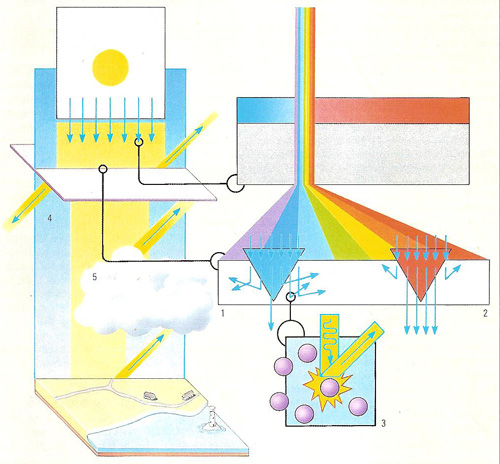scattering

Scattering is the process by which visible light entering Earth's atmosphere is diffused by the gases and dust in the air. The shorter wavelength, higher frequency light at the blue end of the visible spectrum (1) is scattered more by particles in the atmosphere (2) than the red end end of the spectrum (3), because the average size of the particles in the air corresponds with the blue light's wavelength. This diffusion is the reason why the daylight sky appears blue (4) and sunlight is perceived as having a yellow cast. When the Sun is at a low level in the sky at dawn or sunset the light has to pass through a greater thickness of atmosphere, so that only light from the red end of the spectrum reaches the surface in any quantity – hence red skies at sunset or sunrise.
Scttering is the process whereby light or other types of radiation are absorbed and reemitted in all directions, with essentially no change in wavelength (or energy). Different types of scattering involve different types of particle.
Photons scatter off electrons by Thomson scattering or, if the photon has a lot of energy (as in the case of X-rays and gamma-rays), by Compton scattering. If the scattering particle is small compared with the wavelength, the photon experiences Rayleigh scattering; if it's large, the process is known as Mie scattering.
Elementary particles can be scattered by atomic nuclei or other particles. It is the means by which the structure of atoms was first discovered. See Rutherford's experiment and atomic model. Most knowledge of elementary particles and the discovery of new ones has been obtained by scattering experiments in particle accelerators.


